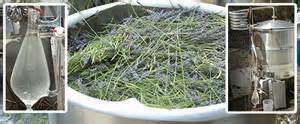What isn't a Hydrosol?



What isn't a Hydrosol?
Now that we know what hydrosols are, let's look at what they are not. They are not distilled, spring, or tap water with essential oils added. Nor are they water and essential oils combined with a dispersant (alcohol or glycerin) to dissolve the oils in water. Water with fragrance oil or other synthetic compounds added to it is not a hydrosol, nor are the cohobated distillation waters, with exception of rose and melissa, which are virtually unavailable in any other form.
(Cohabitation means the hydrosols are recycled repeatedly through the plant material in the still to extract the maximum amount of water-soluble components.)
One product on the market called French Rose Water contains the following ingredients: aqueous extract of rose, imidazolidinyl urea, methyl paraben, carmine and French rose essence concentrate. This is definitely not a hydrosol!
Many aromatherapy books describe ways to "make your own hydrosols" by mixing essential oils in water, but if you are not distilling plant material in a still you are not making a hydrosol. No ifs, and, or buts. A true hydrosol does contain both essential oil and water, but that is only a fraction of what is in it, and you cannot extract all the other ingredients, or the aroma, by combining water and oil. Besides, the water and oil don't mix. Distillation does not release any of the alkaloids that alcohol extraction draws out: therefore, tinctures mixed with water are also not a replication of hydrosols.
Every liter of hydrosol contains between 0.05 and 0.2 milliliter of dissolved essential oil, depending on the water solubility of the plant's components and the distillation parameters. However, the essential oils in solution in a hydrosol will, when analyzed, show a chemical profile different from that of the pure oil from the same run. Why? Because some of the chemicals in the essential oil are just too lipophilic ( oil loving) to stay in the water and others are just too hydrophilic (water loving) to stay in the oil): therefore, are found only in the hydrosol. Furthermore, each product is unique. Hydrosols contain water-soluble substances from the plant material, such as those you would obtain in making a decoction or tea. These water-soluble components are not found in the essential oils and are made up primarily of water-soluble acids. Therefore, mixing plain water and essential oil gives you only half the story, at best.
The essential oils found in hydrosols are frequently in solution, meaning that they are not visible on the surface and do not separate out of the water. It is for this reason that a cohobated hydrosol is undesirable, since in the cohabitation the majority of the essential-oil micro drops will bind together and become big enough to separate from the hydrosol, improving oil yield but reducing the therapeutic ingredients in the water.
Finally, there is the key issue of PH. Hydrosols have a wide range of pH but are always on the acid end of the scale, ranging from a low of 2.9 to a high of around 6.5. Distilled water has a neutral 7.0 pH, and tap water can have an alkaline pH of up to 8.0, depending on where you live. Essential oils have a pH somewhere between 5.0 and 5.8: thus, in combination with water, they will have a midrange 5.0 to 7.0 pH, eliminating the particular benefits that very acid waters can provide.
Reference: Hydrosols: Suzanne Catty
Articles - Most Read
- Home
- What are Hydrosols
- What are Hydrosols-2
- The Monographs
- How to Make a Hydrosol
- Distilled or Extracted Specifically For Therapeutic Use - 3
- Table of Common Latin Names and pH Values - F - O
- Kurt Schnaubelt
- What isn't a Hydrosol?
- Table of Common Latin Names and pH Values - P - S
- Wholly Water!
- Blue Babies
- Supply and Demands
- Mature Skin
- Recipes Alpha F
- Hydrosols In The Marketplace
- Chemicals: Friends or Foes?
- Hemorrhoids
- Nelly GrosJean
- Water as Medicine
- The Educated Consumer
- Influences
- Genitically Modified Plants
- Water Quality
Articles-latest
- Daucus carota/Wild Carrot Seed - pH 3.8-4.0
- Cupressus sempervirens/ Cypress-pH3.5-3.7
- Coriandrum sativum/Coriander Herb-and-Seed
- Comptonia peregrinal/Sweet Fern- pH 3.8
- Citrus clementine (fe) Clementine Petitgrain- pH 4.3-4.4
- Citrus aurantium var. amara (flos) /Neroli Orange Blossom-pH3.8-4.5
- Cistus ladaniferus/Rock Rose-pH 2.9-3.1
- Cinnamomum zeylanicum (ec) Cinnamon Bark-pH3.3
- Chamaemelum nobile/Roman Chamomile - pH 3.0-3,3
- Centaurea cyanus/Cornflower/Bachelor's Button-pH 4.7-5.0
- Cedrus atlantical/Cedarwood/Atlas Cedar-pH 4.1- 4.2
- Hydrosols -The PH - Anomalies
- Hydrosols- Establishing Shelf Life and Stability
- Boswellia carterii/FRANKINCENSE
- Asarum canadense/ Wild Ginger/Canadian Ginger
- Artemesia vulgaris / Artemesia
- ARTEMESIA DRACUNCULUS - TARRAGON
- Angelica archangelica / Angelica Root - Hydrosols
- The Key, or More Correctly, the pH - 2 - Hydrosols
- The Key, or More Correctly, the pH-Hydrosols
- The Hard pHacts - Hydrosols
- Calamus Root/Sweet Flag - ACORUS CALAMUS
- Yarrow - Achillea millefolium - Hydrosols
- Balsam Fir - Abies balsamea - Hydrosols

